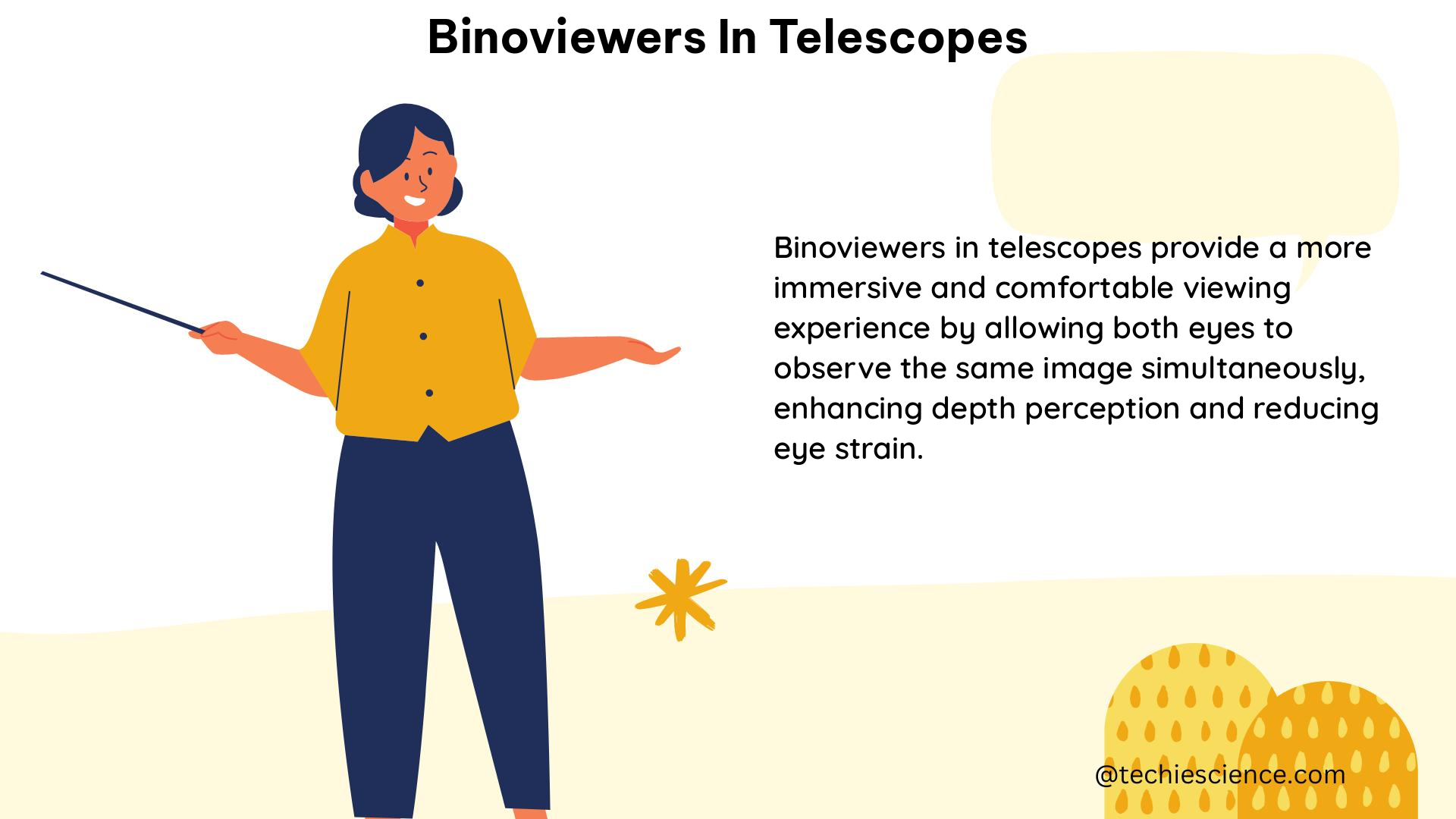Binoviewers in telescopes offer a unique observing experience by providing a three-dimensional view of celestial objects, enhancing depth perception, and improving user comfort. To delve into the technical specifications and quantifiable data of binoviewers, let’s explore the physics and applications associated with these accessories.
Physics of Binoviewers
Binoviewers function by splitting the incoming light from the telescope into two separate optical paths, each leading to an individual eyepiece. This arrangement allows for a more natural viewing experience, as our brains are better equipped to process visual information when both eyes are engaged. The separation between the two optical paths, known as the interpupillary distance (IPD), can typically be adjusted to accommodate different users. The IPD range for most binoviewers is between 56mm and 74mm.
The magnification through binoviewers is determined by the eyepiece focal length and the telescope’s focal length, as per the formula:
Magnification = Telescope Focal Length / Eyepiece Focal Length
For instance, a 25mm eyepiece used with a telescope of 1000mm focal length would result in a magnification of 40x (1000mm/25mm).
Light Transmission and Optical Quality

Binoviewers use prisms, often made of BaK-4 glass, to split and redirect the light path. These prisms are typically coated with multiple layers to enhance light transmission and reduce internal reflections. The coating materials and thickness can be optimized to achieve specific performance characteristics.
The light transmission efficiency of binoviewers can be calculated using the formula:
Light Transmission Efficiency = (1 - Reflection Loss)^n
Where n is the number of optical surfaces the light encounters. For example, the Celestron Stereo Binocular Viewer features 22mm BaK-4 fully multi-coated prisms, which can achieve a light transmission efficiency of up to 95% per prism.
Back Focus Requirements
Binoviewers require a specific amount of back focus, which is the distance between the telescope’s focal plane and the binoviewer. This distance varies depending on the binoviewer model and the telescope type. For instance, the Celestron Stereo Binocular Viewer requires approximately 3.5″ of back focus, making it suitable for catadioptric telescopes like Schmidt-Cassegrain and Maksutov-Cassegrain designs, as well as many refractor telescopes.
The required back focus can be calculated using the formula:
Back Focus = Binoviewer Focal Length + Eyepiece Focal Length
This ensures that the light path is properly aligned and focused within the binoviewer.
Eyepiece Selection
When using binoviewers, selecting the right eyepieces is crucial for an immersive observing experience. Eyepieces with an apparent field of view (AFOV) of 60 degrees or more are recommended, as they provide a wider and more immersive view. For example, the Celestron Stereo Binocular Viewer pairs well with 1.25″ eyepieces offering a 60-degree or wider AFOV.
The AFOV of an eyepiece can be calculated using the formula:
AFOV = 2 * arctan(Eyepiece Apparent Diameter / (2 * Eyepiece Focal Length))
Where the eyepiece apparent diameter is typically 24-26mm for 1.25″ eyepieces.
Advantages and Disadvantages
Binoviewers offer several advantages, such as:
- Enhanced depth perception: The separation of the optical paths mimics the natural binocular vision, providing a more three-dimensional and immersive view of celestial objects.
- Improved user comfort: The binocular viewing reduces eye strain and fatigue, especially during long observing sessions.
- Wider range of eyepiece compatibility: Binoviewers allow the use of a broader selection of eyepieces, including those with larger apparent fields of view.
However, there are also some disadvantages to consider:
- Light loss: Binoviewers split the light into two paths, reducing the overall brightness by approximately 50%.
- Back focus requirements: Binoviewers require more back focus, which may not be compatible with all telescope designs without the use of correctors or additional accessories.
- Increased complexity: The additional optical components and adjustments required for binoviewers can add complexity to the setup and alignment process.
Conclusion
Binoviewers in telescopes offer a unique and immersive observing experience, but their use requires a deeper understanding of the underlying physics and technical specifications. By mastering the concepts of light splitting, magnification, back focus, and eyepiece selection, physics students can optimize their binoviewer setup and enhance their astronomical observations.
References
- Checking Binoviewer Collimation
- Magnification Through Binoviewers
- The Ultimate Guide to Using Binoviewers
- Binoviewers: A Beginner’s Guide
- Binoviewers: A Comprehensive Guide

The lambdageeks.com Core SME Team is a group of experienced subject matter experts from diverse scientific and technical fields including Physics, Chemistry, Technology,Electronics & Electrical Engineering, Automotive, Mechanical Engineering. Our team collaborates to create high-quality, well-researched articles on a wide range of science and technology topics for the lambdageeks.com website.
All Our Senior SME are having more than 7 Years of experience in the respective fields . They are either Working Industry Professionals or assocaited With different Universities. Refer Our Authors Page to get to know About our Core SMEs.